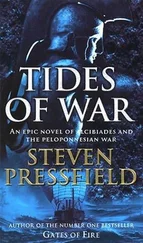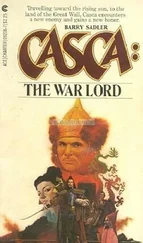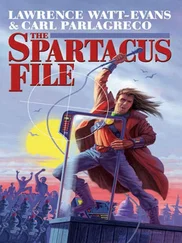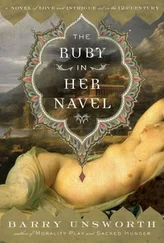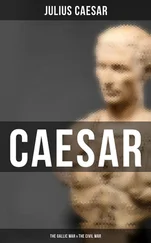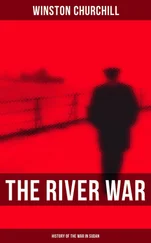The titles of the following all make the subjects clear: R. Kamienik, ‘Gladiatorial Games during the Funeral of Crixus. Contribution to the Revolt of Spartacus’, Eos 64 (1976): 83-90; M. Doi, ‘Why did Spartacus Stay in Italy?’, Antiquitas. Acta Universitatis Wratislaviensis 598 (1983): 15-18; M. Doi, ‘On the Negotiations between the Roman State and the Spartacus Army’, KLIO 66 (1984): 170-74; M. Doi, ‘Female Slaves in the Spartacus Army’, in Marie-Madeleine Mactoux and Evelyne Geny, eds., Mélanges Pierre Lévêque, II: Anthropologie et Societe, Annales littéraires de I’Universite de Besançon, 377; Centre de recherches d’histoire ancienne, 82 (Paris: Les Belles Lettres, 1989): 161-72; R.M. Sheldon, ‘The Spartacus Rebellion: A Roman Intelligence Failure?’, International Journal of Intelligence and Counterintelligence 6.1 (1993): 69-84. Also valuable are B. Baldwin, ‘Two Aspects of Spartacus’s Slave Revolt’, Classical Journal 62 (1966-7): 288-94, and J. Scarborough, ‘Reflections on Spartacus’, Ancient World 1 no.2 (1978): 75-81.
Study of the Spartaks fresco begins with the publication by Italian archaeologist Amadeo Maiuri, Monumenti della pittura antica scoperti in Italia; Sezione terza: La pittura ellenistica romana; fasc. 2. Le pitture delle case di ‘M. Fabius Amandio’, del ‘Sacerdos amandus’ e di ‘P. Cornelius Teges’ (reg, I, ins. 7) (Rome: La Libreria dello Stato, 1938). Jerzy Kolendo makes the case for scepticism in ‘Uno spartaco sconosciuto nella Pompei osca. Le pitture della casa di Amando’, Index 9 (1980): 33-40 and ‘Spartacus sur une peinture osque de Pompei: chef de la grande insurrection servile ou un gladiateur inconnu originaire de la Thrace?’, Antiquitas. Acta Universitatis Wratislaviensis 10 (1983): 49-53. Fabrizio Pesando weighs possible changes in the architecture of the building where the fresco was found in ‘Gladiatori a Pompei’, in Adriano La Regina, ed., Sangue e Arena (Milan: Electa, 2001), 175-98. A sensible overview of the debate in English can be found in van A. Hoof, ‘Reading the Spartaks Fresco Without Red Eyes’, in S.T.A.M. Mols and Eric Moormann, eds., Omni pede stare. Saggi architectonici e circumvesuviani in memoriam Jos de Waele (Naples: Electa Napoli and Ministeri per i Beni e le Attivite‘ Culturali, 2005), 251-6.
Spartacus in Fiction, Film and Ideology
Brent D. Shaw offers an excellent overview of Spartacus in western culture before Marx in the eighteenth and nineteenth centuries, with a look forward to the present in ‘Spartacus Before Marx: Liberty and Servitude’, Princeton/Stanford Working Papers in Classics Version 2.2, November 2005, http://www.princeton. edu/~pswpc/pdfs/shaw/110516.pdf. On Marxist scholarship on Spartacus in the Soviet Union, see W.Z. Rubinsohn, Spartacus’ Uprising and Soviet Historical Writing (Oxford: Oxbow Books, 1987).
Three twentieth-century novels about Spartacus are available in English: Lewis Grassic Gibbon, Spartacus (New York: Pegasus Books, 2006), originally published in 1933; Arthur Koestler, The Gladiators, trans. Edith Simon (New York: Macmillan, 1939), a work by a disillusioned ex-Communist that sees in Spartacus’s revolt the excesses of revolution; and Howard Fast’s famous 1951 Spartacus, republished in 1996 by North Castle Books (Armonk: New York) with a brief introductory essay by Fast about his experiences as an American Communist in the McCarthy era.
Stanley Kubrick’s 1960 film is available in DVD, in several versions; the Criterion Collection version is the best. A 2004 remake, Spartacus - the Complete TV Miniseries, is also available on DVD. A fascinating and enjoyable collection of essays about Kubrick’s film is M.M. Winkler, Spartacus: Film and History (Malden, Mass. and Oxford: Blackwell Publishing, 2007).
Khachaturian’s ballet Spartacus, with choreography by Yuri Grigorovich and performed by the Bolshoi Ballet, is also available on DVD. The 1990 Arthaus DVD version, one of two starring Irek Mukhamedov as Spartacus, is probably the best. Recordings of the music alone are available.
Among documentaries on Spartacus, there is The Real Spartacus, a 2001 production by Britain’s Channel 4; Decisive Battles - Spartacus, from the History Channel in 1994, available on DVD; Spartacus, Gladiator War, from the National Geographic in 2006.
A good introductory textbook to Roman history is M.T. Boat-wright, Daniel J. Gargola and Richard Talbert, The Romans (New York: Oxford University Press, 2004). Michael Crawford, The Roman Republic, 2nd edn (Cambridge, Mass.: Harvard University Press, 1993), offers a brief and incisive scholarly analysis. A lively and accessible overview is P. Matyszak, Chronicle of the Roman Republic (London: Thames & Hudson, 2003). A classic and more detailed alternative is T.R. Holmes, The Roman Republic and the Founder of the Empire, 3 vols. (Oxford: Clarendon Press, 1923). There are excellent introductory essays in Nathan Rosenstein and Robert Morstein-Marx, A Companion to the Roman Republic (Malden, Mass, and Oxford: Blackwell Publishing, 2006).
Tom Holland offers a vivid account of the final decades of the Roman Republic in Rubicon: The Last Years of the Roman Republic (New York: Anchor, 2005). A scholarly introduction is Mary Beard and Michael Crawford, Rome in the Late Republic: Problems and Interpretations, 2nd edn (London: Duckworth, 1999). The indispensable scholarly analysis of Roman politics in those years is E.S. Gruen, The Last Generation of the Roman Republic (Berkeley: University of California Press, 1974).
An essential reference book for Roman officials is T.R.S. Broughton, with the collabouration of Marcia Patterson, The Magistrates of the Roman Republic, 2 vols. (New York: The American Philological Association, 1951-2). See also T.C. Bren-nan, The Praetorship in the Roman Republic (Oxford: Oxford University Press, 2000).
On the economy of Late Republican Italy, see Neville Morley, Metropolis and Hinterland: The City of Rome and the Italian Economy, 200 BC - AD 200 (Cambridge: Cambridge University Press, 1996); Nathan Rosenstein, Rome at War: Farms, Families and Death in the Middle Republic (Chapel Hill: University of North Carolina Press, 2004).
On the demography of Late Republican Italy, see P.A. Brunt, Italian Manpower 225 BC - AD 14 (Oxford: Clarendon Press, 1971); T. Parkin, Roman Demography and Society (Baltimore: Johns Hopkins University Press, 1992); W.W. Scheidel, ‘Human Mobility in Roman Italy, I: The Free Population’, Journal of Roman Studies 94 (2005): 1-26, and ‘Human Mobility in Roman Italy, II: The Slave Population’, Journal of Roman Studies 95 (2005): 65-79.
On individual Roman politicians of the Spartacan War, see A. Keaveney, Sulla, the Last Republican (London: Routledge, 2005); A. Keaveney, ‘Sulla and Italy’, Critica Storia 19 (1982): 499-544; Allen Mason Ward, Marcus Crassus and the Late Roman Republic (Columbia: University of Missouri Press, 1977); F.E. Adcock, Marcus Crassus, Millionaire (Cambridge, England: W. Heffer & Sons, 1966); B.A. Marshall, Crassus, a Political Biography (Amsterdam: Adolf M. Hakkert, 1976); B.A. Marshall, ‘Crassus’s Ovation in 71’, Historia 21 (1972): 669-73; B.A. Marshall, ‘Crassus and the Command Against Spartacus’, Athenaeum 51 (1973): 109-21; P. Greenhalgh, Pompey, the Roman Alexander (London: Weidenfeld and Nicolson, 1980); R. Seager, Pompey the Great, a Political Biography (Oxford: Blackwell Publishing, 2002); Anthony Everitt, Cicero: The Life and Times of Rome’s Greatest Politician (New York: Random House, 2003); B.A. Marshall, R.J. Baker, ‘The Aspirations of Q. Arrius’, Historia 24.2 (1975): 220-31; I. Shatz man, ‘Four Notes on Roman Magistrates’, Athenaeum 46 (1968): 345-54.
On Sertorius, see Philip O. Spann, Quintus Sertorius: Citizen, Soldier, Exile (Fayetteville: University of Arkansas Press, 1976); C.F. Conrad, Plutarch’s Sertorius: A Historical Commentary (University of North Carolina Press, 1994). On Mithridates, see Adrienne Mayor, Mithridates (Princeton: Princeton University Press, forthcoming).
Читать дальше

